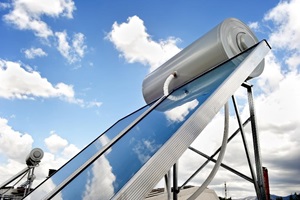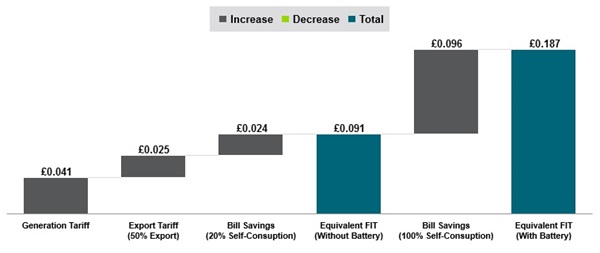- Distributed Energy Resources
- Energy Technologies
- Energy Technologies
- Policy Regulation
- solar PV
Can Batteries Save the UK Solar Market?

Last week, E.ON and EDF Energy both announced plans to launch solar plus storage programs for their UK residential customers. E.ON and EDF are two of Europe’s largest energy providers, and EDF is a large owner of coal, gas, and nuclear plants in the United Kingdom with a 13 GW portfolio.
EDF Energy has formed a joint venture with Lightsource, the largest solar operator in the United Kingdom, to launch Sunplug, a company that will be offering residential solar. Sunplug has indicated two contracting options for its systems:
- One option will be to sign an index-linked, 20-year power purchase agreement with an initial price of £0.099/kWh ($0.123/kWh). Assuming 2% escalation over 20 years, this would average to £0.12/kWh. For comparison, the cheapest electricity tariff in the United Kingdom costs £0.12/kWh or £0.15/kWh ($0.15/kWh or $0.19/kWh) with or without fixed monthly costs, respectively. In this option, Sunplug is the owner of the system and receives any government incentives available to the installation and is responsible for any changes to it.
- Sunplug’s second option will be a direct purchase for £7,999 ($9,999) that includes the equipment (5 kW PV system, inverter, and 6.6 kWh battery), 2-year labor cover, operations and maintenance, and a 2-year license for its home energy management system—but does not include installation or value added tax.
E.ON’s offerings are less clear, but the direct purchase for a typical system will start at £7,495 ($9,368) including the battery, or £4,495 ($5,618) for the PV system only.
The Economics of Self-Consumption
An interesting question is why both utilities decided to enter the UK residential market with solar plus storage programs rather than only solar. A key driver is the current regulatory environment, which has elevated the attractiveness of self-consumption in the UK solar market.
In the United Kingdom, a residential solar system can currently access the following revenue streams:
- Generation tariff: This is paid for every kilowatt-hour generated, regardless of its destination. It is currently set at £0.0414/kWh ($0.05/kWh) and is indexed to the UK inflation rate.
- Export tariff: In theory, this is paid for the electricity exported to the grid. For the time being, the government assumes that half of the kilowatt-hours generated are exported for installations smaller than 30 kW. Currently, the export tariff is set at £0.053 ($0.066).
- Self-consumption: This is the customer’s bill reduction due to the avoided electricity consumption from the grid. In a northern European country, residential customers are typically only able to use about 20%-30% of the electricity produced by their own solar system without any storage or significant behavioral changes. Assuming 20% self-consumption and an electricity tariff of £0.12/kWh ($0.15/kWh), a solar system owner would save the equivalent of £0.024/kWh ($0.03/kWh) generated.
Taking these revenue streams into account, a residential solar owner with 20% self-consumption would receive £0.09 per kWh ($0.11/kWh) generated, whereas an owner with 100% self-consumption would receive £0.186 per kWh ($0.23/kWh) generated, 106% more. Of course, a battery would be necessary to achieve total self-consumption for a reasonably sized residential system. Using E.ON’s figures, the battery cost is £3,000 ($3,750). In other words, to earn 106% more per kilowatt-hour, the owner would need to invest only 67% more than the solar-only system—not a bad deal!
UK Solar PV Plus Storage Revenue Streams

(Source: Guidehouse Insights)